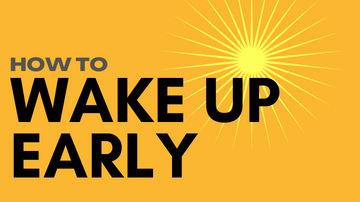Daily Life
How to Start a Fitness Routine Without Going to the Gym

In today’s fast-paced world, not everyone has the time or desire to go to the gym. Whether it’s due to a busy schedule, financial constraints, or simply not wanting to leave the house, starting a fitness routine without going to the gym is not only possible but also incredibly effective. The key is consistency, finding enjoyable exercises, and creating a structured routine that fits your lifestyle. In this article, we’ll explore how you can start and maintain a fitness routine from the comfort of your own home or any location you choose, without needing a gym membership.
Define Your Fitness Goals and Start Small
Before diving into any fitness routine, it’s important to have clear goals. What do you want to achieve? Is it weight loss, building strength, increasing flexibility, or just staying active? Defining your fitness goals will guide you in choosing the right exercises and structuring your routine.
Starting small is essential, especially if you’re new to fitness or returning after a long break. It’s easy to feel overwhelmed by the idea of creating a new routine, but taking small steps and gradually increasing the intensity will help you build momentum without risking injury or burnout. For example, you can start with short, 15-20 minute sessions a few times a week and then gradually increase the duration as your fitness level improves. Remember, consistency is key, and making your fitness routine a habit is far more important than pushing yourself too hard in the beginning.
Invest in Basic Home Equipment (Optional)
One of the great advantages of starting a fitness routine without going to the gym is that you don’t need a lot of fancy equipment to get started. However, there are a few basic items that can enhance your workout and make it more enjoyable. You don’t need to invest in expensive machines; simple, affordable equipment will suffice. A good pair of sneakers, a yoga mat for floor exercises, resistance bands for strength training, dumbbells or kettlebells for added resistance, and a jump rope for cardio can be all you need to get started.
You can also use your own body weight for exercises like push-ups, squats, lunges, and planks. These bodyweight exercises are highly effective for building strength and improving endurance. Additionally, if you prefer running or walking, investing in a good pair of running shoes is all you need to get started. With a few basic items, you can create a versatile and effective home gym.
Choose the Right Exercises for Your Goals
Choosing the right exercises is crucial for making progress and avoiding boredom in your fitness routine. The exercises you incorporate into your routine should align with your goals. If your goal is to lose weight, incorporating cardiovascular exercises like running, jumping jacks, or cycling can help burn calories and increase your metabolism. If you’re aiming for strength, bodyweight exercises such as squats, push-ups, and lunges, as well as resistance training with bands or dumbbells, will help you build muscle and tone your body.
For those looking to improve flexibility or reduce stress, yoga and Pilates are excellent choices. These low-impact exercises not only help increase flexibility but also improve balance and core strength. If you’re seeking a full-body workout, circuit training, where you perform a series of exercises in quick succession with minimal rest, is a great option. Circuit training can incorporate strength, cardio, and flexibility, making it a well-rounded routine that targets all areas of fitness.
Develop a Structured Routine
One of the most important aspects of any fitness journey is creating a structured routine that works for you. Without the structured environment of a gym, it’s easy to lose focus or procrastinate. Start by scheduling your workouts into your calendar just as you would any other important appointment. Consistency is key, so aim to work out at the same time each day or a few times a week, depending on your schedule. You can choose to work out in the morning to start your day with energy, or in the evening as a way to unwind after a long day.
Your routine should include a mix of different exercises to target various muscle groups and prevent monotony. For example, you might alternate between cardio and strength training days, or you could combine both types of exercises into a single session. A sample weekly routine could look like this:
- Monday: Full-body strength training (bodyweight exercises, dumbbells, or resistance bands)
- Tuesday: Cardio (running, cycling, or jump rope)
- Wednesday: Yoga or Pilates for flexibility and recovery
- Thursday: Upper-body strength training
- Friday: Cardio (HIIT or steady-state)
- Saturday: Core workout and stretching
- Sunday: Rest or active recovery (light walking or stretching)
This schedule can be modified to fit your specific fitness level and goals, and you can increase or decrease the intensity as you progress.
Utilize Online Resources and Apps for Guidance
If you’re unsure how to get started or need some extra motivation, there are countless free and paid online resources available. Fitness apps, YouTube channels, and online workout programs can provide structured routines, instructional videos, and tracking tools that will help guide you throughout your journey. Many of these resources offer various types of workouts, including bodyweight exercises, yoga, Pilates, and even dance-based routines like Zumba.
Fitness apps like MyFitnessPal, Nike Training Club, or Freeletics allow you to create customized workout plans based on your goals and track your progress over time. You can also find specific programs for beginners, intermediate, and advanced levels to ensure you are always challenged. Many YouTubers and fitness influencers also post free workout routines and tips for home workouts, so you can find something that fits your preferences and level of fitness.
Stay Motivated and Track Your Progress
Motivation can sometimes be a challenge when working out on your own, but there are several strategies you can use to stay motivated and committed. Setting short-term and long-term goals is a great way to measure progress and keep yourself on track. For example, you might aim to perform 10 push-ups in a row by the end of the month or run a 5k in two months. Tracking your progress not only gives you something to work toward, but it also helps you see the improvement you’re making.
You can use a fitness journal or an app to log your workouts and track your goals. Many fitness apps allow you to monitor key metrics such as calories burned, time spent working out, and weight lifted, which can provide a sense of accomplishment and motivation to continue.
Additionally, it’s important to celebrate small wins along the way. Whether it’s hitting a new personal best in an exercise, completing a workout after a busy day, or simply sticking to your routine for a full week, celebrating these milestones will help keep you motivated and committed to your fitness journey.
Prioritize Rest and Recovery
While consistency and intensity are important, it’s just as vital to give your body the rest and recovery it needs to repair and grow stronger. Overtraining can lead to fatigue, injury, and burnout, which is why incorporating rest days into your routine is crucial. On your rest days, focus on active recovery activities like walking, light yoga, or stretching to help your muscles recover.
Getting adequate sleep, eating a balanced diet, and staying hydrated are all key elements of recovery. Your body needs time to heal after each workout, especially if you’re doing strength training or intense cardio. Make sure to listen to your body, and if you’re feeling tired or sore, allow yourself additional rest time. Rest is just as important for progress as the workouts themselves.
Conclusion: Achieving Fitness Without the Gym
Starting a fitness routine without going to the gym is entirely possible, and with the right approach, you can achieve your health and fitness goals from the comfort of your home. By defining your goals, investing in basic equipment, choosing the right exercises, and creating a structured routine, you can stay on track and make consistent progress. Utilize online resources for guidance, stay motivated by tracking your progress, and prioritize rest and recovery to ensure a balanced fitness journey. Remember, consistency and patience are key, and by sticking to a routine, you’ll be able to build a sustainable fitness routine that works for your lifestyle.
Daily Life
10-Minute Morning Routine for Busy People

10-Minute Morning Routine for Busy People
In the fast-paced world we live in, finding time for an elaborate morning routine can seem like a luxury reserved for the few. But even if your mornings are packed with responsibilities, meetings, or family obligations, a 10-minute morning routine can still be powerful and transformative. The goal is not to cram everything into those few minutes, but to establish a focused sequence of habits that help you ground yourself, enhance mental clarity, and start the day with purpose. A well-structured 10-minute morning routine doesn’t require waking up at 5 a.m. or performing a dozen self-care rituals — it’s about making intentional choices that support your well-being, even in a short amount of time.
Start with Deep Breathing and Grounding (1 Minute)
The first minute of your day should not involve checking your phone or rushing to your inbox. Instead, begin with one minute of mindful breathing. As you wake up, sit up in bed or stand near a window, and inhale deeply through your nose for four seconds, hold for four, and exhale slowly for six. This controlled breathing helps regulate your nervous system, calms your thoughts, and transitions your brain from sleep mode to alert awareness. This simple grounding exercise doesn’t just relax your mind — it signals your body to wake up gently and intentionally. Starting the day in a centered state sets a much better tone than diving into distractions or stress.
Hydrate Immediately (1 Minute)
After hours of sleep, your body is dehydrated. Drinking a glass of water as soon as you wake up rehydrates your cells, jumpstarts your metabolism, and boosts cognitive function. This minute-long habit may seem minor, but it’s essential. Adding a squeeze of lemon or a pinch of sea salt can increase the hydration benefits and support digestion. Avoid reaching for coffee before drinking water — hydration first ensures you’re nourishing your body, not stressing it. This quick act tells your brain that your health matters, even if time is limited.
Quick Movement to Wake the Body (2 Minutes)
You don’t need a full workout in the morning, but just two minutes of movement can increase blood flow, reduce stiffness, and improve mood. A short series of stretches, jumping jacks, push-ups, or sun salutations can energize your body without requiring any equipment. This movement doesn’t just wake your muscles — it also releases endorphins that can shift your mindset from groggy to motivated. Think of it as a physical reset button that shakes off sleep and brings you into an active state of readiness for the day ahead.
Mental Clarity with a Mini To-Do Review (3 Minutes)
Take three minutes to get clear on what needs to happen today. You don’t have to write a full planner spread — just identify your top three priorities. This could be as simple as writing them down on a sticky note or saying them out loud. Focus on tasks that are important rather than just urgent. By doing this, you avoid feeling scattered or reactive, and you step into the day with a clear intention. When your mind knows what matters most, it becomes easier to navigate distractions and make better decisions. This habit also reduces overwhelm, because it frames your day in a way that feels manageable and purposeful.
Positive Affirmations or Gratitude Reflection (2 Minutes)
Your mindset in the morning often dictates the energy you carry throughout the day. Spend two minutes practicing positive affirmations or reflecting on gratitude. You can say something like, “I am capable of handling whatever comes my way today,” or “Today is a fresh start, and I choose positivity.” If affirmations feel awkward, simply think of three things you’re grateful for — no matter how small. Practicing gratitude shifts your focus from what’s lacking to what’s already working in your life. It helps you tap into a sense of abundance, resilience, and peace before diving into external pressures.
Optional Bonus: Silence or Nature Exposure (1 Minute)
If you have a balcony, a window with sunlight, or even access to fresh air, step outside or sit quietly for one more minute. Allow yourself to just exist without doing anything. Let your thoughts settle. This single minute of silence or nature exposure helps you reconnect with the world outside your phone or obligations. It reminds you that before the meetings, errands, and chaos, you are a human being who deserves stillness. This micro-moment of peace can feel incredibly nourishing, especially if your day is non-stop.
The Secret to Making It Work: Consistency and Simplicity
The effectiveness of a 10-minute routine doesn’t depend on how much you do — it’s about how consistently you do it. The goal isn’t perfection but repetition. When you design a short, manageable morning routine that you can actually stick to, you build momentum and discipline without burning out. Over time, this small investment in yourself will yield big returns in your productivity, emotional stability, and physical wellness. Simplicity is your best ally here. Don’t overthink it — just commit to showing up for 10 intentional minutes every morning. That’s enough to create a positive ripple effect throughout your entire day.
Conclusion: A Morning Routine for Real Life
Busy schedules and demanding lifestyles don’t have to mean sacrificing self-care or mental clarity. A 10-minute morning routine offers a practical, realistic way to ground yourself before the whirlwind begins. By focusing on breathing, hydration, movement, mental clarity, and positive intention, you can turn even the most hectic mornings into an opportunity for self-alignment and strength. It’s not about how early you wake up or how much you squeeze in — it’s about starting your day with presence, purpose, and self-respect. When you make time for yourself first, you move through the rest of the day with more energy, resilience, and calm.
Daily Life
Why You Should Never Skip Making Your Bed

Why You Should Never Skip Making Your Bed
Making your bed each morning might seem like an insignificant task, something easily brushed off in the hustle of daily life. Yet, this small act has a surprisingly profound impact on your mindset, productivity, and overall well-being. It’s more than just a neat appearance — it’s a habit that sets the tone for your entire day. From psychological benefits to cleanliness and discipline, making your bed is a foundational ritual that can support your goals and bring a sense of order into an otherwise chaotic world. In a time when we’re constantly seeking efficiency and mental clarity, this five-minute routine is one of the easiest ways to begin your day with intention.
A Simple Act That Starts a Chain Reaction
One of the most powerful reasons to make your bed in the morning is the domino effect it has on the rest of your day. Accomplishing this first small task gives you a quick win — it sends a message to your brain that you are organized, capable, and in control. This initial success sets a positive momentum, making you more likely to complete other tasks and follow through with your intentions throughout the day. Psychologists often refer to this as the “keystone habit” — a behavior that can trigger widespread change in other areas of life. When you make your bed, you’re not just tidying up your room — you’re also priming your mind for discipline, responsibility, and achievement.
A Clean Environment Supports a Clear Mind
Your surroundings have a direct impact on your mental state. Walking into a room with a rumpled, unmade bed can subconsciously contribute to feelings of disorder and stress, especially if your day has already been demanding. On the other hand, a neatly made bed instantly brings a sense of calm and cleanliness to your space. It visually signals that your home — and by extension, your life — is in order. This is especially important if you work from home or spend a lot of time in your bedroom. By starting the day with a clean slate, you give yourself the mental clarity needed to make better decisions and stay focused, productive, and emotionally balanced.
Making the Bed Strengthens Discipline and Routine
Discipline is built through consistent action, and making your bed is a low-barrier activity that reinforces self-discipline every single morning. Even on days when you feel tired, unmotivated, or overwhelmed, pushing yourself to complete this one task is an exercise in resilience. Over time, this small act becomes a symbol of your commitment to order, habit-building, and personal growth. It teaches you that even when things feel out of control, there is always something you can do to bring structure back into your day. This sense of discipline can spill over into more challenging areas of your life, such as fitness, career goals, or financial planning.
It Improves Sleep Hygiene and Nighttime Routine
Making your bed in the morning directly contributes to a better nighttime routine. A neatly made bed feels more inviting at the end of the day, signaling to your brain that it’s time to rest and recover. Climbing into a clean, organized sleeping space can actually improve your sleep quality and make it easier to wind down. Your brain forms associations with your environment, so if your bed looks chaotic, your mind may struggle to relax. On the contrary, returning to a well-made bed helps create a sleep-conducive environment that promotes comfort, peace, and better rest. It may seem minor, but this habit supports a full cycle of good sleep hygiene — from how your day starts to how it ends.
It Teaches Attention to Detail and Personal Pride
Taking a few extra minutes to smooth the sheets and fluff the pillows may not change the world, but it does develop an eye for detail. In a world filled with distractions and shortcuts, attention to the little things can make a big difference in your personal and professional life. By making your bed neatly, you’re training yourself to care about how things are done, not just whether they get done. This habit instills a quiet sense of pride — it’s a reminder that you value yourself enough to maintain your space, even if no one else will see it. That personal pride becomes a foundation for how you carry yourself throughout the day, how you treat others, and how you approach responsibilities, no matter how big or small.
It’s a Moment of Mindfulness in a Rushed World
In our fast-paced routines, it’s easy to feel like the day begins the moment you grab your phone or rush out the door. Making your bed offers a moment of pause and presence — a simple opportunity to be mindful. You can treat it as a meditative practice, focusing on each fold and tuck, the coolness of the sheets, and the comfort of the space you’re creating. This act can help you anchor your morning in calm awareness before external demands take over. Mindfulness doesn’t always require ten minutes of deep breathing; sometimes it’s found in the intention behind the most ordinary routines — like making your bed.
It’s Backed by Science and Endorsed by Experts
The habit of making your bed isn’t just anecdotal advice — it’s been championed by military leaders, motivational speakers, psychologists, and lifestyle experts alike. Admiral William H. McRaven famously declared in a commencement speech that if you want to change the world, start by making your bed. His point was that success starts with discipline and attention to the small things. Research also shows that people who make their beds report feeling more productive and better about their day. Surveys have indicated that regular bed-makers are more likely to report satisfaction with their jobs, home life, and sleep quality compared to those who leave it undone.
Conclusion: Small Habit, Big Impact
While it might be tempting to rush past the simple act of making your bed, skipping it means missing out on a key opportunity to anchor your day with purpose, order, and intention. This small gesture can bring structure to your morning, improve your mental clarity, and even influence your sleep and emotional well-being. In a world where big changes often feel overwhelming, the most transformative steps are often the smallest. By making your bed, you’re sending a powerful message to yourself: that you care about your space, your mindset, and how your day unfolds. So tomorrow morning, take the extra moment to make your bed — and start your day with a win.
Daily Life
How to Design a Morning Routine Based on Your Personality Type

How to Design a Morning Routine Based on Your Personality Type
Creating a morning routine isn’t a one-size-fits-all approach. What energizes one person might drain another, and the secret to an effective start to the day often lies in aligning your habits with your personality type. Whether you’re introverted or extroverted, detail-oriented or big-picture focused, your morning routine should reflect your natural tendencies. By customizing your routine to fit who you are, you can boost productivity, improve mood, and feel more in control of your day. Understanding your personality type — whether through frameworks like the Myers-Briggs Type Indicator (MBTI), the Big Five traits, or simply knowing how you function best — can serve as a foundation for building a powerful, energizing morning flow that sticks.
Why Your Personality Type Should Shape Your Routine
Personality influences behavior, energy levels, decision-making processes, and even how we recharge. An introvert may need solitude in the morning to feel centered, while an extrovert may thrive on interaction or auditory stimulation. People who are naturally structured and organized will likely benefit from a precise checklist or timed routine, whereas those who are spontaneous and creative may need more flexibility and freedom to explore what feels right each day. Ignoring these personal inclinations can lead to friction, burnout, or simply abandoning the routine altogether. By tuning into your personality type, you not only increase the likelihood of sticking to your morning habits, but also create a flow that feels intuitive, energizing, and sustainable over time.
Morning Routines for Introverts: Start Quiet, Stay Focused
If you’re an introvert, the early hours are best spent in calm, low-stimulation environments. You may find that jumping straight into social interactions, phone calls, or intense workouts leaves you feeling drained instead of energized. Instead, build a morning routine that prioritizes internal focus. Begin your day with silent meditation, journaling, or slow stretching. If you drink coffee or tea, enjoy it quietly without background noise. Reading something uplifting or inspirational can provide mental fuel without requiring you to engage externally. Plan your day using a private planner or app, and avoid emails or texts until later in the morning. Introverts tend to work best with structure, so having a consistent wake-up time and a ritualized process will help set the tone for a productive day.
Morning Routines for Extroverts: Energize Through Engagement
Extroverts often feel energized through external stimulation and social interaction, so their ideal morning routine will include ways to connect and activate their energy early. Starting the day with a high-energy workout or even dancing to music can help elevate mood and alertness. You might benefit from listening to a podcast or chatting with a friend or family member over breakfast. For extroverts, engaging with the world before starting work can help you feel more grounded and excited for the day ahead. Unlike introverts, extroverts may not need long stretches of solitude in the morning, so a more dynamic and flexible schedule can feel more natural. Make sure to include time for review of goals or a quick verbal affirmation session to keep motivation high.
Morning Routines for Planners and Organizers: Structure Is Power
For those who thrive on structure, routines that follow a detailed, step-by-step format are ideal. These personality types do best when their mornings are mapped out with time blocks and checklists. Start your day by reviewing your agenda, checking your calendar, and confirming your top priorities. A digital or physical planner can be a helpful companion. Consider including a specific amount of time for each task, such as 10 minutes for gratitude journaling, 20 minutes for a workout, and 15 minutes for news or current events. This group finds comfort and productivity in consistency, so replicating the same routine each day may enhance performance. The predictability provides a sense of control and reduces decision fatigue, allowing for a smoother transition into the workday.
Morning Routines for Free Spirits and Creatives: Flow Over Formula
Creative personalities or those who dislike rigid systems tend to resist highly structured routines. If this describes you, your morning routine should be more intuitive and changeable, based on your mood or energy levels. Instead of waking up to an alarm at the same time every day, consider giving yourself a range (like between 6:30 and 7:30 AM) and choosing activities that inspire you that morning. You might rotate between journaling, sketching, a nature walk, or playing music. Keep your workspace open and inspiring and allow your routine to evolve as needed. The key here is to avoid feeling trapped — instead of a schedule, think of your morning flow as a menu of nourishing options. This approach can help keep things fresh and engaging, which is crucial for those who thrive on novelty and spontaneity.
Morning Routines for Type A Personalities: Fuel for High Achievement
Type A individuals are driven, competitive, and thrive on accomplishment. For these personality types, a powerful morning routine should focus on high efficiency and goal alignment. Begin your day early with a short burst of physical activity, followed by reviewing your short- and long-term goals. Incorporate activities like cold showers, focused breathing, and productivity planning apps like Notion or Todoist. You might also include reading high-performance literature, listening to motivational speeches, or writing affirmations. Time is a key asset for Type A personalities, so your morning should be engineered to provide the most return on your energy investment. However, don’t forget to include short moments of mindfulness to help regulate stress and avoid burnout over time.
Morning Routines for Empaths and Emotionally Attuned Individuals
Highly empathetic and emotionally aware individuals need a peaceful, nurturing environment to thrive. Begin your morning with a calming atmosphere — light a candle, play soft instrumental music, and avoid the news or overwhelming digital inputs right away. Journaling your feelings or doing a guided meditation can help you reconnect with your center before engaging with others. Aromatherapy or nature walks may also ground your energy and uplift your mood. Since emotional well-being is crucial to how your day unfolds, pay attention to your emotional state each morning and design your activities to either soothe or inspire, depending on what you need most.
Tips to Tailor Your Morning to Any Personality
While everyone has unique preferences, there are universal strategies that can help any personality type create a more effective morning routine. First, avoid checking your phone immediately upon waking — this allows you to focus inward and set your own tone rather than reacting to outside demands. Second, ensure your environment supports your goals. Whether it’s keeping your journal by the bed or setting up a cozy nook for morning tea, physical cues can reinforce your routine. Third, experiment with your timing — not everyone thrives waking up at 5 a.m., and that’s okay. The goal is to find a wake time and sequence that aligns with your body’s rhythm and psychological comfort. Finally, track your energy and mood after different routines to see what works best, and adjust accordingly. Personal evolution is natural, and your morning routine should evolve with you.
Conclusion: Make Your Mornings an Expression of Who You Are
Designing a morning routine based on your personality type allows you to start your day with intention, clarity, and balance. Rather than forcing yourself into habits that don’t feel right, you’re aligning your energy and values with actions that feel natural and rewarding. Whether you crave structure or spontaneity, solitude or stimulation, your ideal morning routine already lives within you — it’s just waiting to be discovered. Take the time to experiment, reflect, and refine your routine until it becomes an authentic reflection of your personality. When your mornings are designed to suit your nature, the rest of the day becomes easier, more productive, and more joyful.
-

 Daily Life1 day ago
Daily Life1 day ago10-Minute Morning Routine for Busy People
-

 Daily Life3 days ago
Daily Life3 days agoHow to Build a Morning Routine That Sets the Tone for a Productive Day
-

 Daily Life1 day ago
Daily Life1 day agoWhy You Should Never Skip Making Your Bed
-

 Daily Life1 day ago
Daily Life1 day agoHow to Design a Morning Routine Based on Your Personality Type
-

 Daily Life3 days ago
Daily Life3 days agoTime Management Routine for Busy Professionals
-

 Daily Life1 day ago
Daily Life1 day agoHow to Build a Bedtime Routine That Beats Insomnia
-

 Daily Life1 day ago
Daily Life1 day agoDaily Routine for Working Moms to Balance Home and Career
-

 Daily Life3 days ago
Daily Life3 days agoSimple Daily Lifestyle Changes to Improve Your Mental Health




